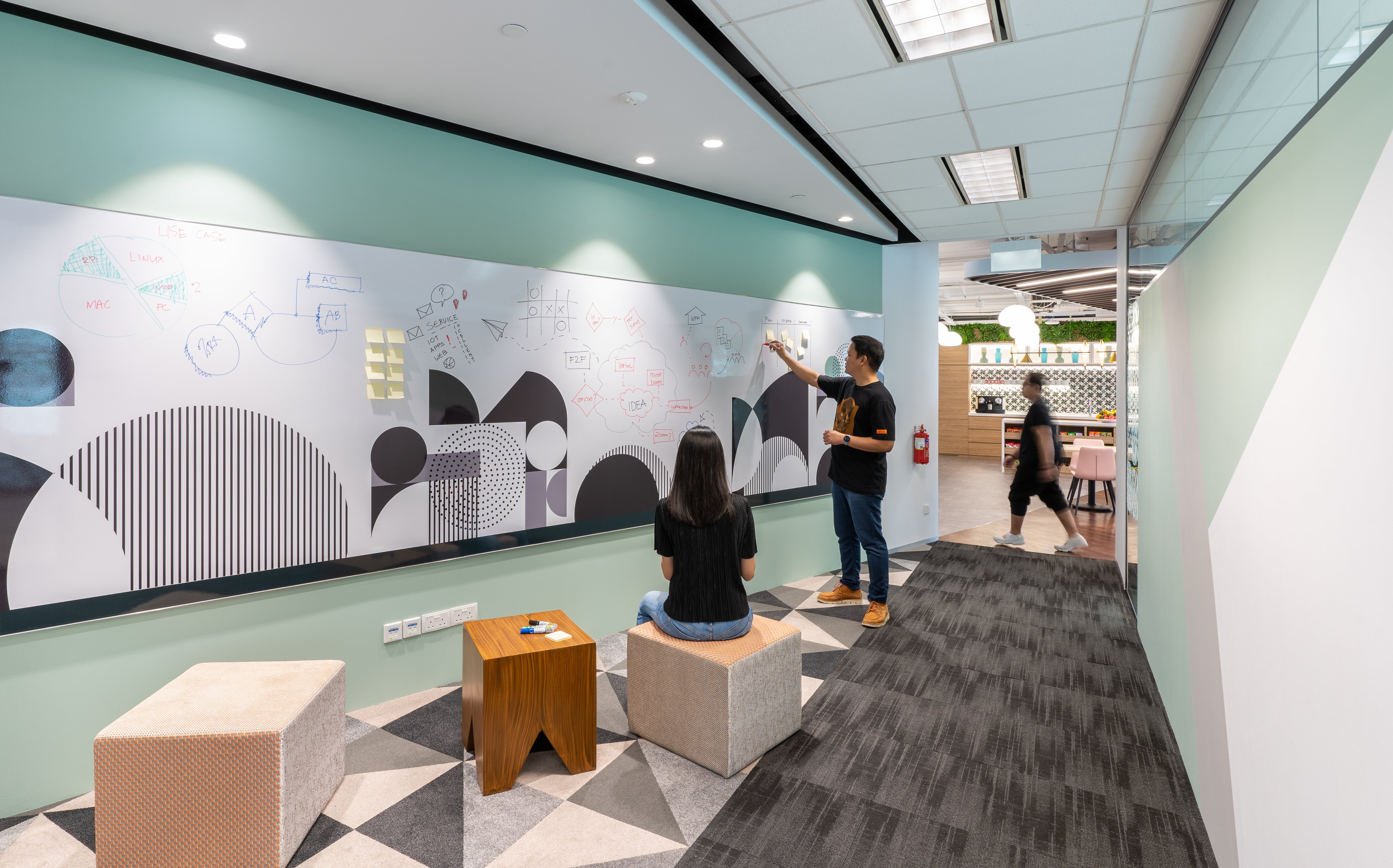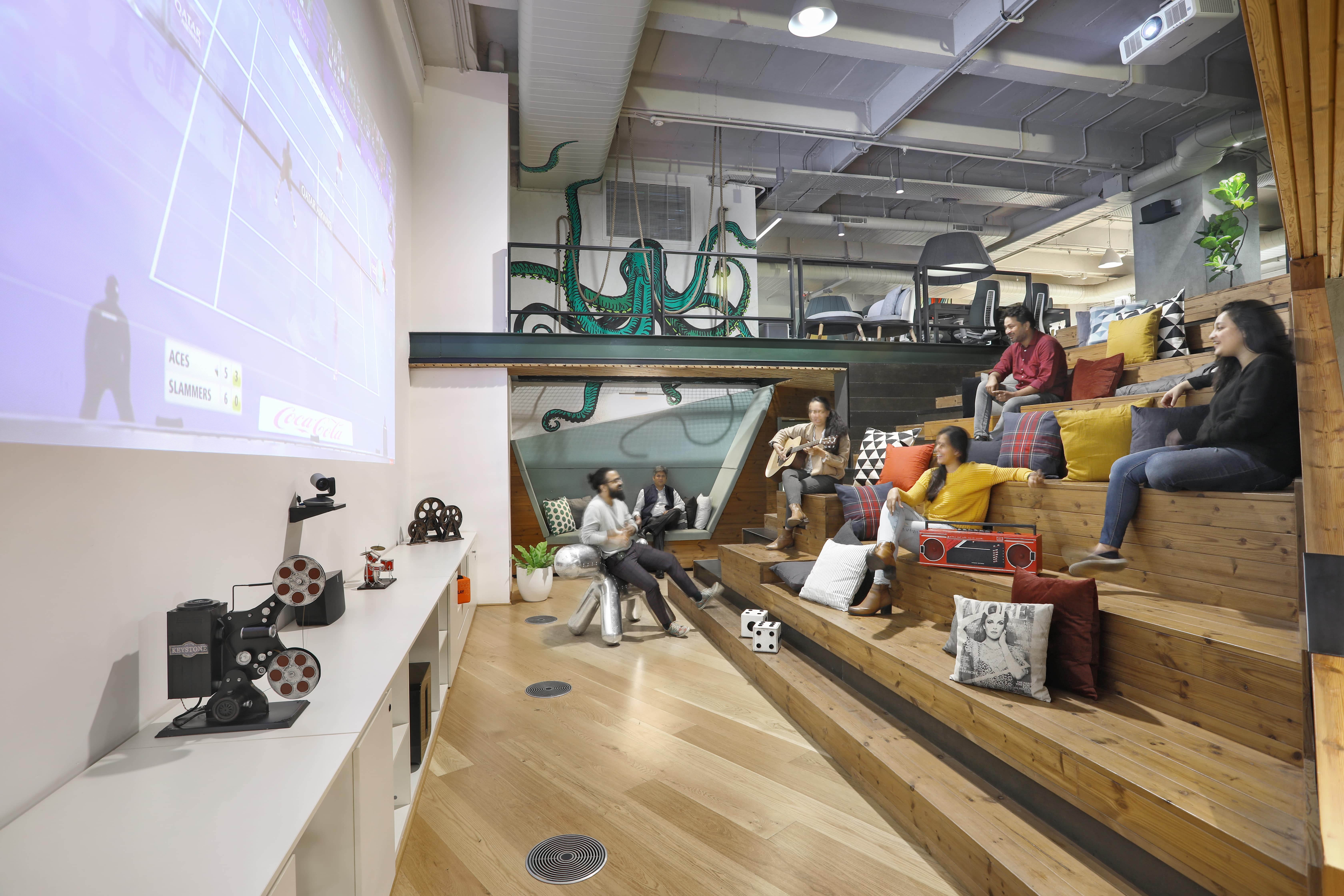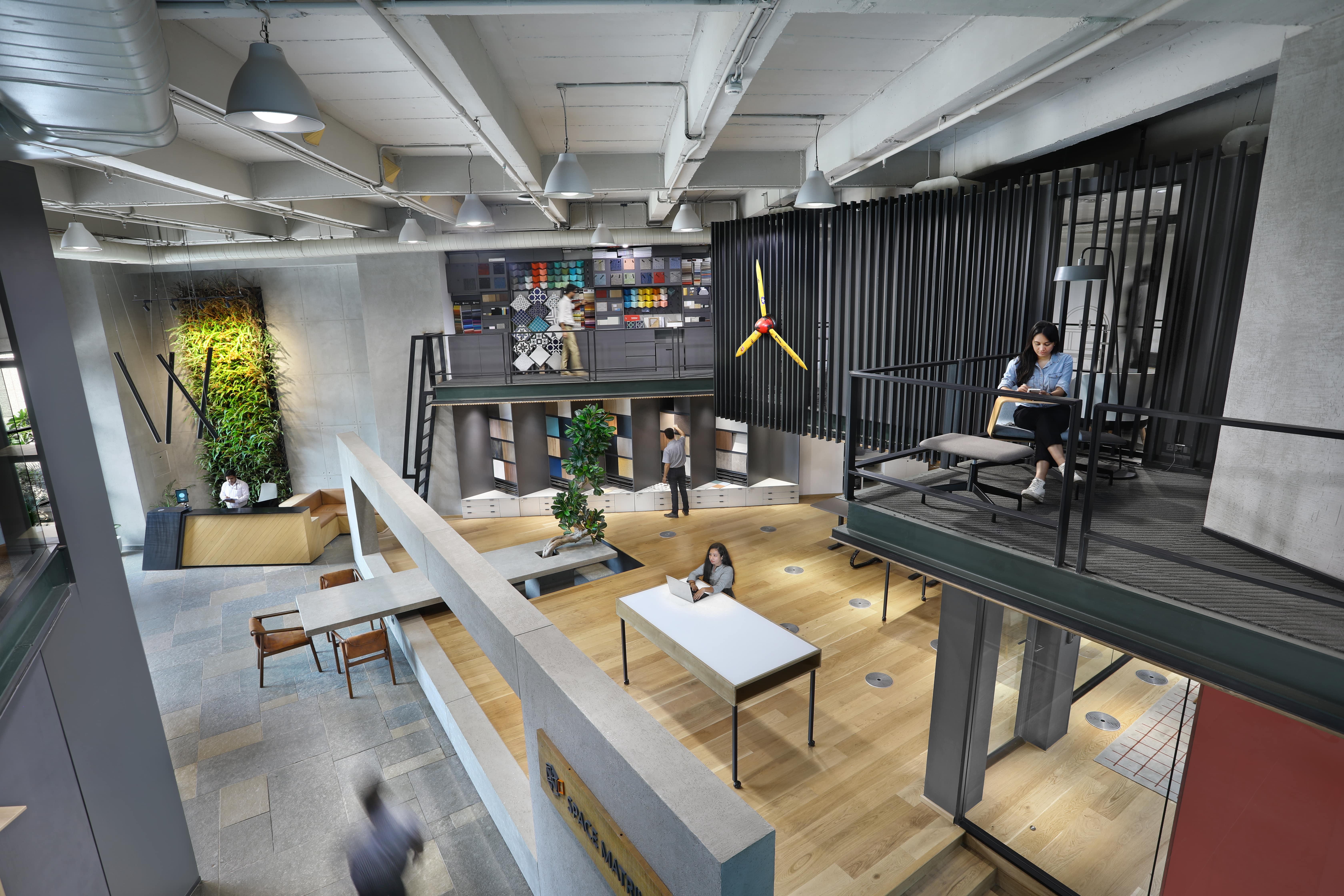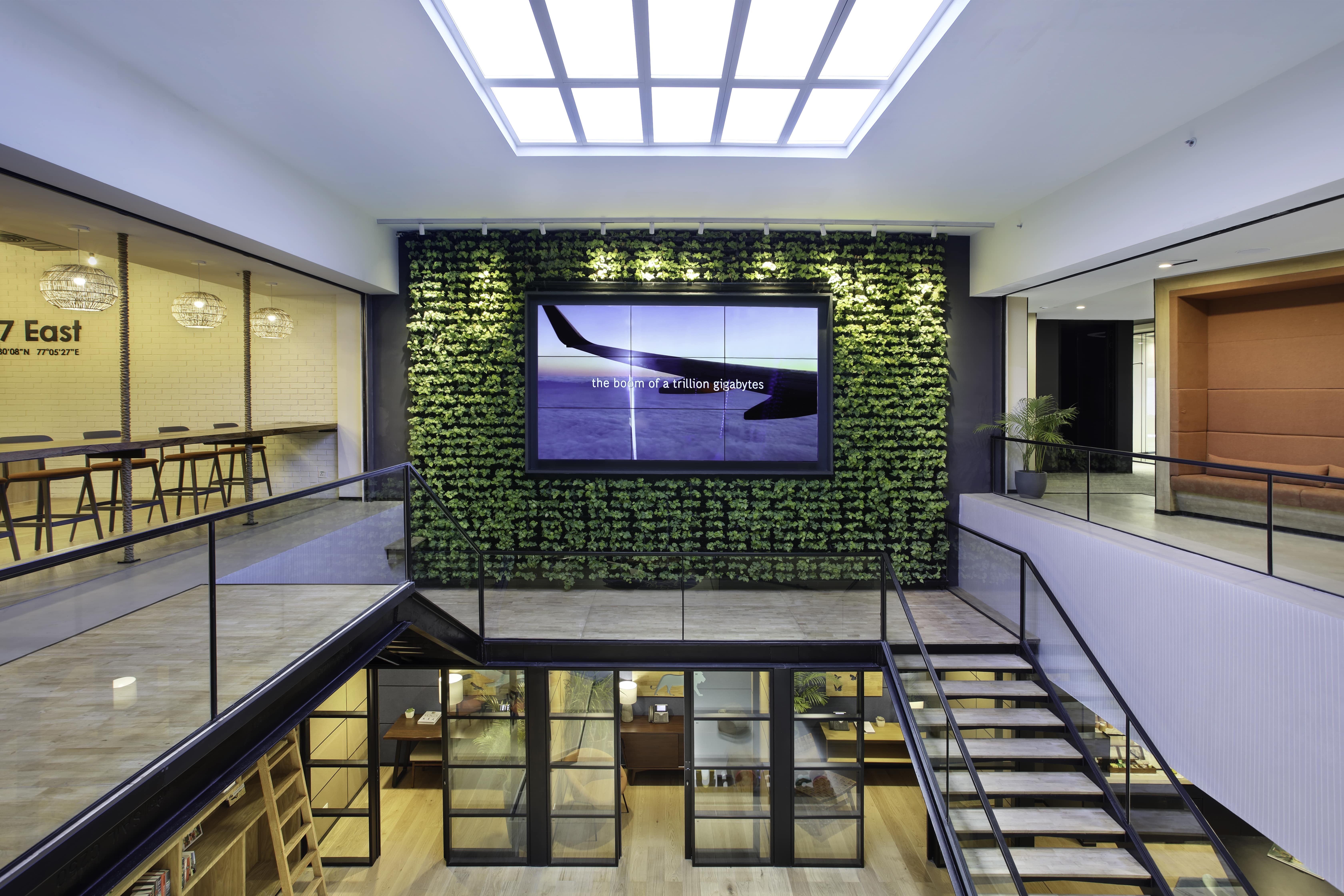Bringing human moments to the hybrid workplace: 3 new normal workplace strategies
You present a new idea to your clients. A visible ripple of excitement through the room tells you they love your thoughts.
You stop by the pantry for coffee. You run into a colleague from a different team and spend a pleasant few minutes chatting.
Your boss comes by your desk to appreciate your hard work on that pitch. Your colleagues overhear — one shouts a cheerful kudos; another throws out some playful banter.
These are just the kind of social and human moments that don’t translate well with remote interactions. An approval message or an appreciation mail isn’t quite the same. That is not to say that remote working doesn’t have its advantages too. The last year and a half has revealed innumerable benefits of working from home and different factors (like commute, comfort and flexibility) have shaped employees’ preferences over how and where they like to work.
At first glance, some of these preferences seem contradictory. For example, fewer distractions at home over the last few months meant that a lot of employees enjoyed higher productivity. But it also meant that they worked in silos and experienced a sense of disconnection — which they did not enjoy. This only goes to show that employee needs cannot be measured in absolute terms. It is natural that their preferences would change based on changing circumstances and needs.
The future points to the hybrid workplace
These seemingly ‘contradictory’ needs are not going anywhere, especially in a post-Covid scenario, and that’s where a hybrid workplace comes in. It allows organisations to cater to diverse preferences, even as they evolve from one week to the other.
3 experiences that firms need to enable for a successful hybrid strategy
1. Fluidity in workstyles
Offering choice and control to employees throws up some logistical considerations. It means that you can no longer estimate a fixed ratio to divide your workspace into different set environments. Having assigned seating for every employee, for instance, would likely mean that a lot of this space would go unused since not everyone will be in the office on a given day. Occupancy levels will change from day to day, and the office will need to cater to this in order to let people enjoy the hybrid experience.

Confidential client, Singapore
Hot desking policies complemented with space modularity can be the perfect solution. This can help ensure that everyone who is in office has a place to work from — with the option to reconfigure the remaining spaces into one-on-one collaboration zones, casual meeting rooms, social spaces and training areas. The right technology can help manage this well by letting employees view space availability before they even come to the office, and by enabling them to pre-book the work areas and meeting rooms they’ll need that day. Tech innovations like SpaceXP, our workplace technology platform, already lets us offer such capabilities. In fact, it goes beyond this and enables people to customise the spaces they reserve — controlling everything from lighting and temperature settings to even the choice of food and beverages that are made available there.
Meeting spaces too, will need to be designed keeping in mind that all participants might not be physically present in the room. Everything from the layout of the room to the placement of the screen to the technology that powers the meeting can have an impact on how included remote participants are made to feel.
2. Foster a sense of belonging
This again, will look very different now. Given that people will not be in office all the time, company culture cannot simply consist of well-designed amenities and other perks tied to the physical space. Employers will have to figure out how the office can enable those positive human interactions within a hybrid scenario too.

Space Matrix Lab, Gurgaon
Flexible, configurable spaces designed for multiple uses can be a great way to do this. Take the Mind Valley at our very own Space Matrix Lab, for example. This is a step seating area that is equipped with lightweight furniture and screens, which can be moved around to create casual, impromptu meeting spaces for small groups, large teams and remote employees alike. The large digital screen on one side also makes this space apt for a Friday-night movie screening, which again, can be enjoyed both in-person and remotely. But when required, all our designers in Gurgaon can be invited for an all-hands meet — and the Mind Valley would be able to accommodate such interactions too. The area opens up into the adjacent space to create one large, spacious room. A certain section of the floor can be elevated with gesture controls to form a long conference table. Our company culture — the way we work, socialise and innovate — is thus never limited by the physical space or by how many people are in office that day.
A strong focus on comfort and well-being is another way to foster a sense of belonging. It ensures that those who choose to (or need to) work from the office do not feel deprived of the creature comforts of home — the cosy sofa, the easy access to a kitchen, a soothing balcony or work nook lush with indoor greenery. Resimercial furnishings and biophilic design elements can go a long way in drawing people to the office so that they can work together at least a few times a week, and taking care of their physical and psychological needs when they are there.
3. Wow guests, clients and potential candidates
As the last year has demonstrated, client meetings and presentations can be hosted remotely, and potential candidates can be interviewed over video calls. However, there is value in meeting clients in person at least some of the times, and in having candidates come down to the office to meet the team. To enable these experiences, the hybrid office has to offer something that the typical Zoom call does not; something that makes a face-to-face interaction worthwhile.

Space Matrix Lab, Gurgaon
This is where organisations can use technology to their advantage, to create truly immersive experiences in the hybrid workplace. This is something else that our Space Matrix Lab offers, with its extensive material library. Clients who visit can actually see, touch and compare the different materials, textiles and fabrics stocked there and pick their favourites. They can then utilise the AR and VR apps to get a feel of how these materials will actually look in the spaces they are getting designed. In a similar way, businesses can create experience zones, innovation centres and virtual sales floors, all within their hybrid offices.

Confidential client, Gurgaon
Cultural integration is another potential opportunity here. Unique and immersive branding can tell visitors and candidates more about an organisation’s on-ground culture than an extensive presentation deck ever will. We recently helped a global consulting firm achieve this through a tech-driven hybrid workspace design strategy. At the entrance, we implemented digital walls and immersive digital tunnels, all of which cumulatively went to showcase the projects and initiatives that the brand was involved in. These were complemented with strategically located café spaces and spillover areas just beyond, which made for perfect spots for the visitor to sit down with the host and continue the conversation.
Planning to transition to a hybrid work model in future? We can help you plan out your design strategy.









